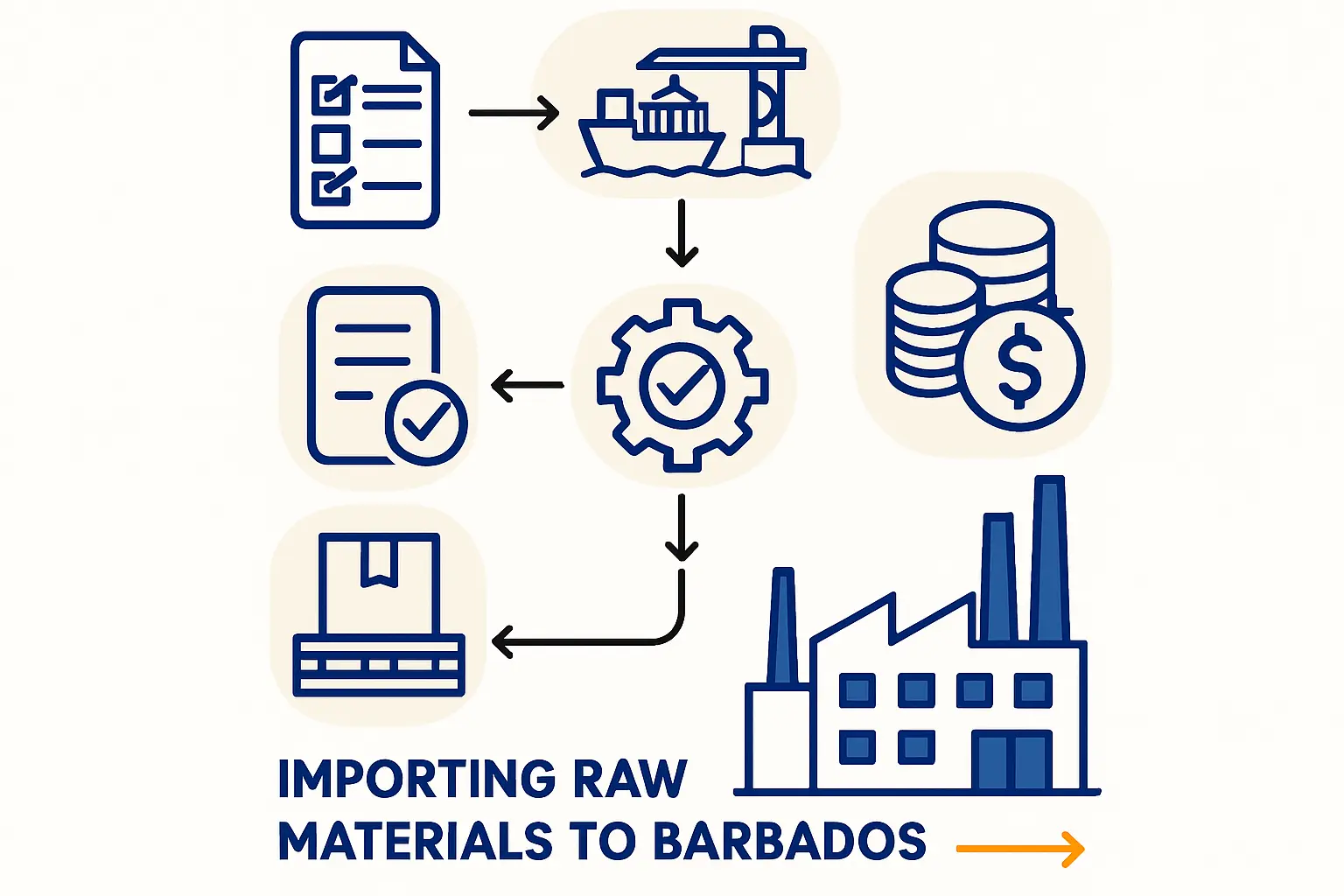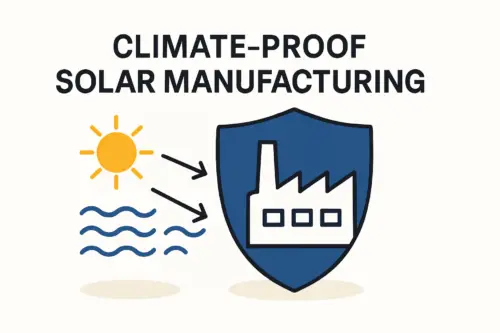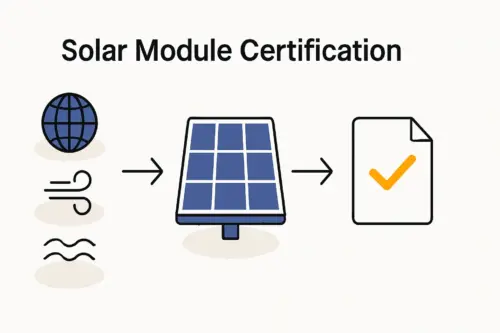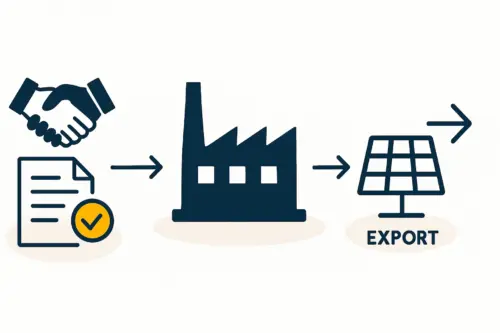An entrepreneur can have a flawless business plan, secured funding, and a prime location for a new solar module factory. But the project can still face significant delays and cost overruns from one often-underestimated factor: getting the necessary equipment and raw materials into the country and to the factory site.
For a prospective solar manufacturer in Barbados, understanding inbound logistics is no secondary task; it’s a cornerstone of strategic planning. This guide outlines the key logistical considerations for establishing a solar manufacturing operation in Barbados, covering the primary port of entry, customs procedures, and the final, critical phase of inland transportation.
Table of Contents
The Gateway to Barbados: Assessing the Port of Bridgetown
Virtually all heavy equipment and bulk raw materials for a solar factory will arrive by sea. This makes the Port of Bridgetown the most critical piece of infrastructure in your supply chain, and a thorough assessment of its capabilities is essential.

According to Barbados Port Inc., the facility is a full-service, deep-water port. For a business planner, that status translates into several key advantages:
Vessel Accommodation: With a draught of 11.6 meters, the port can accommodate the majority of modern cargo vessels that transport standard 20-foot and 40-foot containers. This ensures you have flexible shipping options from major manufacturing hubs in Asia and Europe.
Handling Capacity: The port is equipped with gantry cranes and dedicated container stacking areas, indicating a capacity for efficient offloading and temporary storage. This reduces the risk of vessel congestion and associated delays.
SIDS DOCK Initiative: Barbados hosts the SIDS DOCK initiative, a partnership among Small Island Developing States (SIDS) to promote renewable energy. This reflects a high level of governmental and institutional support for sustainable energy projects—support that can often translate into smoother administrative processes for related industries.
However, a capable port is only the first link in the chain. The efficiency of operations within the port, specifically customs and clearance, is the next critical hurdle.
Navigating Customs and Tariffs
Once your containers are offloaded, they enter the domain of the Barbados Customs & Excise Department. Understanding this process is vital for accurate budgeting and timeline forecasting.
Barbados is a member of the Caribbean Community (CARICOM), which operates a Common External Tariff (CET). This means goods imported from outside the CARICOM region are subject to a common set of duties. For solar manufacturing, this primarily applies to:
Manufacturing Equipment: Machinery like solar cell stringers, laminators, and testers imported from countries such as Germany, China, or the United States will be subject to the CET.
Raw Materials: Key components like photovoltaic cells, EVA film, backsheets, and aluminum frames will also incur tariffs if sourced internationally.
Factoring these duties into your financial projections is crucial. New entrepreneurs often fail to budget for import tariffs, which can significantly inflate the initial investment requirements for a solar factory.
Based on experience from J.v.G. Technology GmbH projects in emerging markets, working with a local customs broker is invaluable. These professionals have an in-depth understanding of tariff codes, documentation, and administrative procedures, helping prevent costly delays from incorrect paperwork.
The Final Mile: Inland Transportation to Your Factory Site
Your equipment has cleared customs. Now comes the final—and often most challenging—phase: moving oversized and sensitive machinery from the Port of Bridgetown to your chosen factory location.
This stage demands meticulous planning that goes far beyond simply hiring a trucking company, as logistical access is a primary consideration for the solar factory building requirements.

Route Survey: Before any equipment is shipped, a detailed route survey is necessary. This assesses the entire path from the port to the factory for potential obstacles, including road widths, turning radii at intersections, overhead power lines, and the weight capacity of bridges.
Specialized Transport: A 35-meter-long laminator cannot be transported on a standard flatbed truck. It requires specialized heavy-haulage vehicles and expert handling. Coordinating the availability of such equipment in Barbados is a key logistical task.
Timing and Permits: Moving oversized loads often requires special permits and may be restricted to specific times, such as night hours, to minimize traffic disruption. These logistical steps must be integrated into the overall project timeline.
A failure at this stage can be catastrophic. A multi-million-dollar piece of machinery stranded because it cannot pass under a bridge brings the entire project to a complete halt.
A Strategic Framework for Logistics Planning
To mitigate these risks, a structured approach is essential.
Phase 1: Pre-Shipment Due Diligence. Engage with a local logistics partner or freight forwarder early in the planning process. They can provide realistic estimates for customs duties, clearance times, and inland transport costs.
Phase 2: Local Partner Integration. Your local partner should be an integral part of your project team, providing on-the-ground intelligence and managing the customs and transport process directly.
Phase 3: Contingency and Buffer Planning. Always build a logistical buffer into your timeline and budget. To account for unforeseen issues, a conservative estimate might add 15-20% to your anticipated shipping and clearance timeline, as delays should always be anticipated.
By treating logistics as a core strategic function rather than a simple shipping task, you can preempt problems and prevent them from jeopardizing your entry into the solar manufacturing market in Barbados.
Frequently Asked Questions (FAQ)
1. What is a freight forwarder and why do I need one?
A freight forwarder is a company that organizes shipments to move goods from the manufacturer to a final destination. For a project in Barbados, a good forwarder will manage the entire process: booking cargo space, preparing documentation, tracking the shipment, and coordinating with a local customs broker for clearance and inland delivery. They are essential for navigating complex international supply chains.
2. How long does customs clearance typically take in Barbados?
While it can vary, a typical timeframe for container clearance, assuming all paperwork is correct, can range from a few days to over a week. However, discrepancies in documentation or physical inspections can extend this period significantly. Budgeting for at least 7-10 working days is a prudent starting point.
3. Are there any import duty exemptions for renewable energy equipment in Barbados?
Governments often offer incentives for renewable energy projects. It is worth investigating current Barbadian government policies for potential concessions or exemptions on import duties for solar manufacturing equipment. A local legal or financial advisor can provide the most accurate, up-to-date information.
4. What kind of insurance is needed for shipping heavy equipment?
Standard carrier liability is often insufficient to cover the full value of high-cost manufacturing equipment. Securing comprehensive cargo or marine insurance is essential. This policy should cover the goods from the point of origin to the final factory site (“warehouse to warehouse” coverage), including any damage during inland transport.
5. How can I begin to understand the full scope of setting up a factory?
The logistical component is just one part of a much larger picture. For a structured introduction to all the elements involved, from initial planning to full-scale production, the pvknowhow.com platform offers educational resources. You can explore the free course on how to start a solar factory to gain a comprehensive understanding of the entire process.







